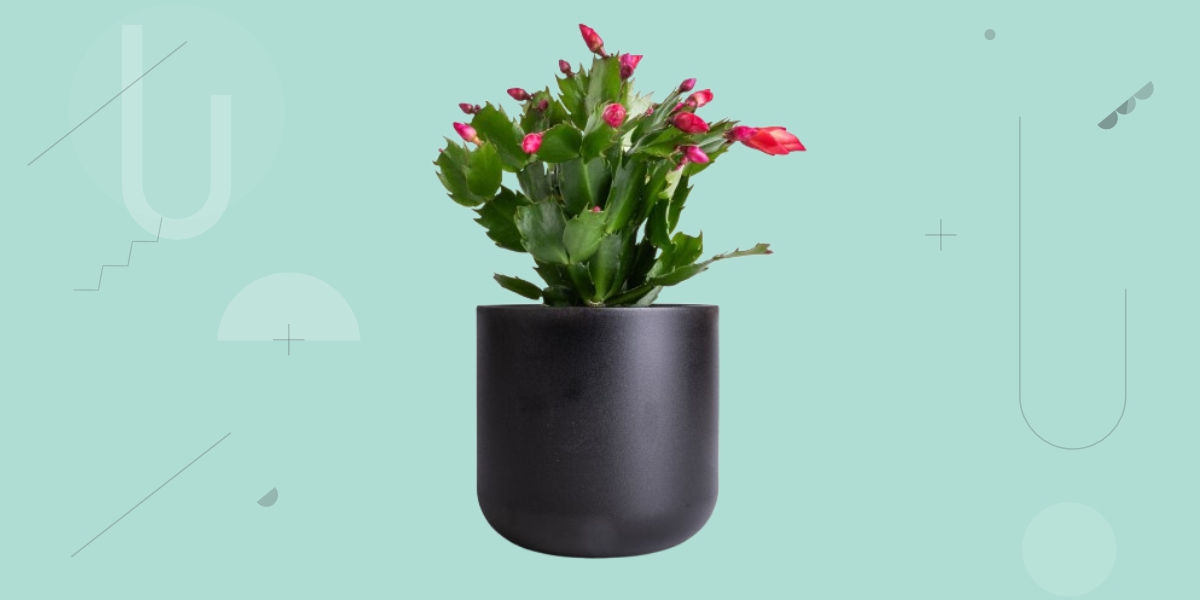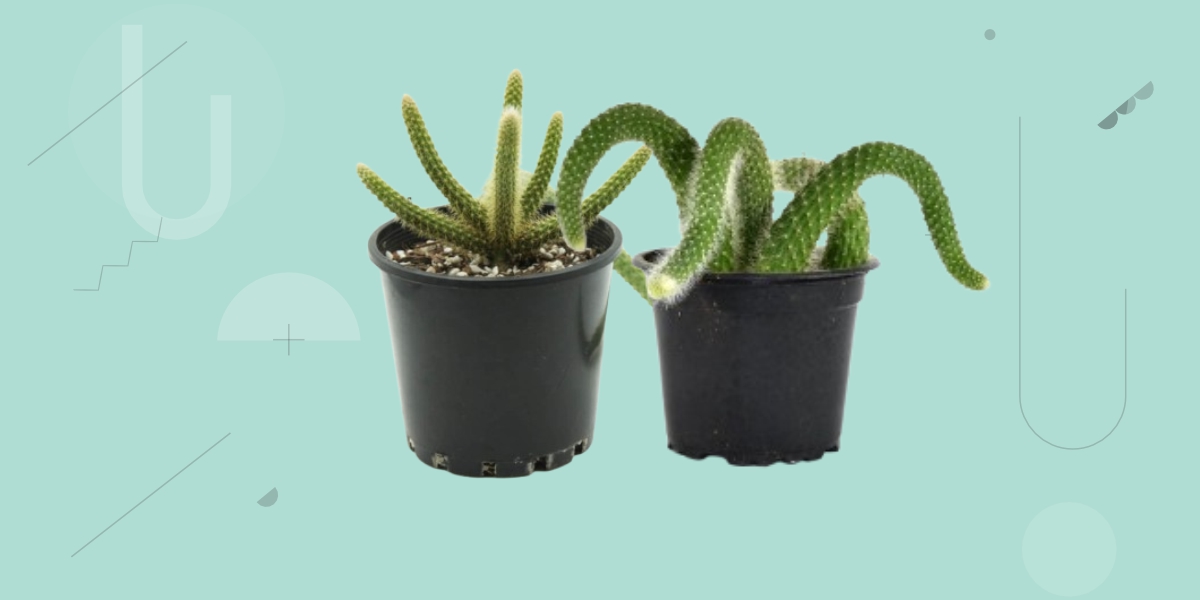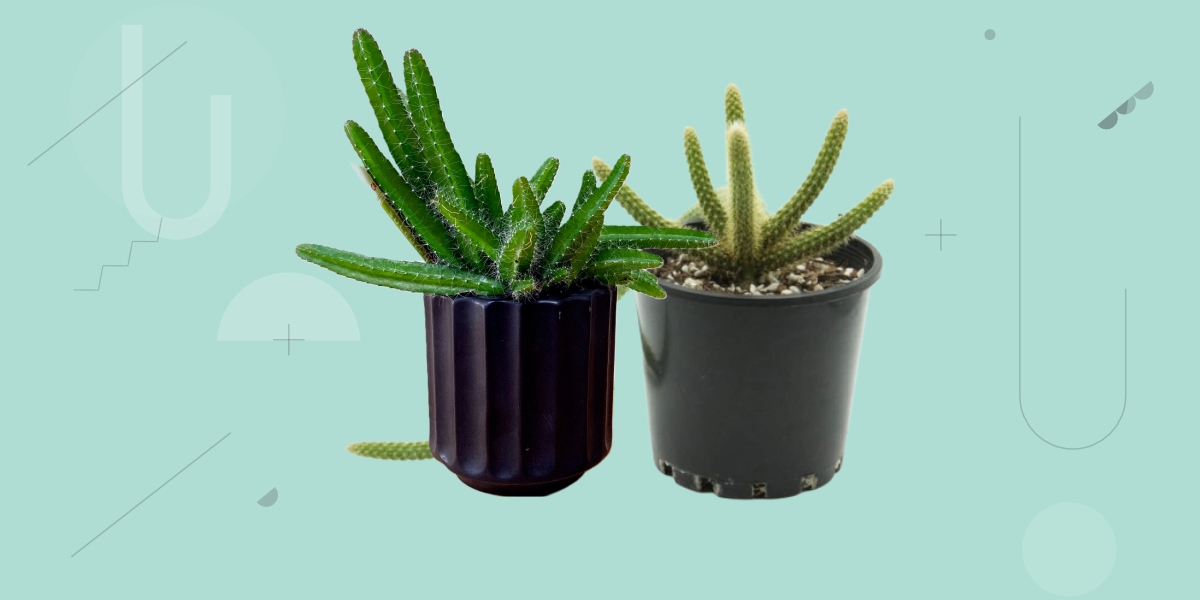Cacti are stunning and tough plants that are perfectly adapted to harsh conditions. However, their defense mechanisms can quickly turn a pleasant interaction into a painful experience.
So, if you ever find yourself in such prickly situations, you probably know that extracting these tiny needles is a real challenge. If not handled correctly, these minuscule barbs can lead to irritation, redness, and possibly infection.
This guide will provide you with the most effective and safe methods for removing cactus needles and explain how to get tiny cactus needles out of skin. We also offer essential aftercare advice and share practical tips to help you avoid future encounters.
Key Highlights
- Not all cactus needles are the same. Spines are larger and usually easier to remove, but glochids are tiny, barbed, and often invisible.
- You have several practical options for removing needles, from tweezers for precision on individual spines to adhesive tape or glue for clusters of glochids, and even pantyhose for widespread glochids or soaking for deeper ones.
- Know when to seek medical attention, especially for needles in sensitive areas, signs of infection, or persistent pain
Getting to Know Cactus Needles: Spines vs. Glochids
When you encounter a cactus, you need to know that not all its needles are the same. There are two main types: spines and glochids.
Spines are the larger, more obvious thorns you can easily see. While they can pierce your skin deeply, their size generally makes them easier to remove.
In contrast, glochids are the real troublemakers. These are tiny, hair-like barbs that are often hard to see with the naked eye. They detach very easily from the cactus and readily embed themselves in your skin.
Glochids are responsible for most cactus-related skin irritations since their barbed design makes them cling tenaciously to your tissue. The main issue with glochids is their tendency to break off in your skin. If not removed, they may cause serious problems and even lead to infections.
Understanding the distinction between spines and glochids is very important, as the best removal method will differ depending on which type of needle you’re dealing with.
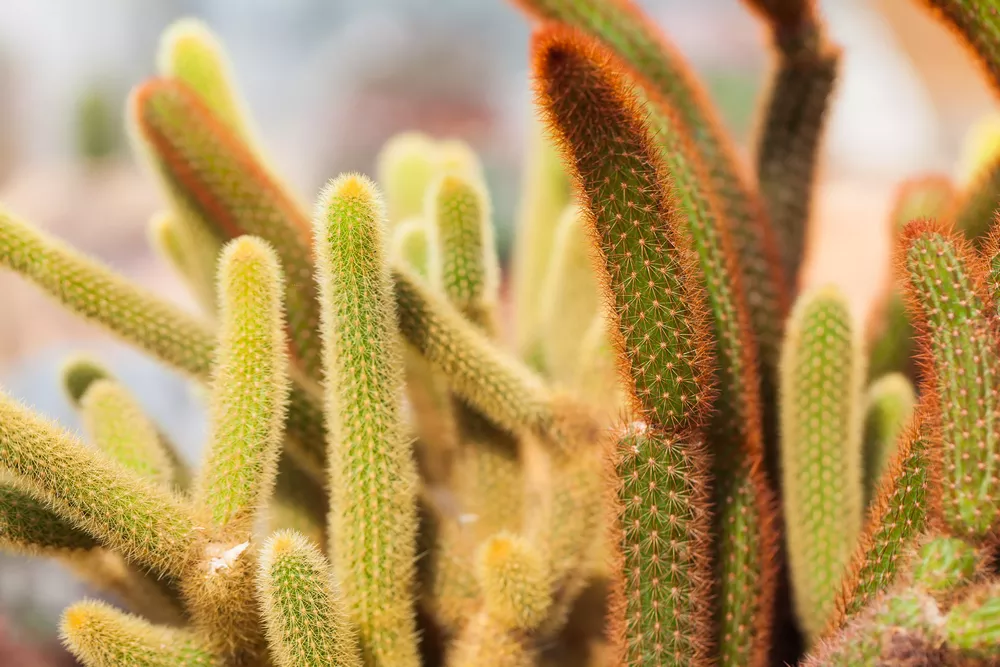
What Happens if You Leave Cactus Needles in Your Skin?
Ever wondered what happens if you don’t quite get all those sneaky cactus needles out? Good question! While those tiny thorns won’t exactly go on a grand tour through your body, leaving them in your skin can definitely stir up some trouble.
When cactus needles (or thorns) get stuck under your skin, they can lead to a few unwelcome guests. You might experience localized inflammation as your body reacts to the foreign object. This can lead to redness, swelling, and pain around the affected area.
Even more concerning, embedded needles can pave the way for an infection. This happens when bacteria find their way into the tiny puncture wound, potentially causing pus, increased pain, and a more serious issue.
In rarer cases, if a needle is left in for a long time, your body might try to wall it off, leading to the formation of a granuloma. These can be persistent and may require medical intervention for removal.
Therefore, while they won’t go traveling, it is always best to get those cactus culprits out to avoid any unnecessary discomfort or complications.
Can Cactus Needles Cause Infection?
Leaving those pesky cactus spines in your skin isn’t just a minor annoyance. It can indeed lead to some significant health issues. According to a 2010 study on cactus spines, if they are not fully removed, these little troublemakers will cause a variety of complications.
We are talking about inflammation, outright infection, and even toxin-mediated reactions or allergic reactions. In some cases, they might even lead to the formation of a granuloma, which is a small lump that forms around the foreign body.
With that being said, medical professionals must have a keen eye for foreign bodies in soft tissue, even if a patient doesn’t recall a specific injury.
Any penetrating skin wound should be thoroughly checked for splinters, because overlooking and not removing them is likely to result in harm to the patient and even malpractice claims.
What to Do Immediately After Cactus Contact
If you’ve just had an unfortunate encounter with a cactus, your first actions can significantly impact how easily you remove the prickly invaders and how much discomfort you experience. Here’s what you should do right away:
- First and foremost, do not rub or scratch the affected area. While your instinct might be to rub the sting away, this will only push the needles deeper into your skin or spread tiny glochids to other parts of your body.
- Next, find a safe and stable spot, especially if you are outdoors. Move away from the cactus to prevent further contact and find a well-lit, preferably shaded area where you can comfortably assess the situation.
- Before you do anything else, wash your hands thoroughly with soap and water. This necessary step helps prevent introducing bacteria into your skin, which could lead to infection, especially if you have broken skin from the cactus.
- Finally, assess the damage. Take a close look at the affected area to determine whether you are dealing with larger, more visible spines or the minuscule, hair-like glochids.
Knowing which type of cactus needle has embedded itself will help you choose the most effective removal method, which we’ll discuss in more detail below.
How to Remove Cactus Needles: 5 Practical Methods
Getting cactus needles stuck in your skin is never fun, but thankfully, there are several effective ways to remove them. The best approach depends on the type, number, depth, and location of the needles. You might even need to combine a few methods for the best results.
Method 1: Tweezers for Precise Removal
Tweezers are your best friend for visible, individual spines or larger glochids. This method offers precision and is ideal for needles that haven’t broken off.
Here’s how to use them:
- Sterilize your tweezers with rubbing alcohol to prevent infection.
- Find good lighting, and if needed, use a magnifying glass to pinpoint the needle.
- Grip the needle as close to your skin’s surface as possible. This helps prevent it from breaking.
- Pull slowly and steadily in the same direction the needle entered to minimize skin damage.
- After removal, clean the area with soap and water, then apply an antiseptic.
- Always check for any remaining needles and repeat the process if necessary.
Pro-Tip: If a needle breaks, try to extract the remaining piece with the tweezers. If it’s too deep, consider another method or seek medical attention. Remember to be patient; rushing may break the needle or push it deeper.
Method 2: Adhesive Tape for Glochid Clusters
For areas peppered with many glochids, adhesive tape is a quick and efficient solution. Strong tapes like duct tape or medical tape can pull out multiple glochids at once, saving you the tedious task of tweezing each one.
Steps for using tape:
- Cut a piece of tape large enough to cover the affected skin.
- Press the tape firmly onto your skin, making sure it makes good contact with the glochids.
- Peel the tape off slowly and against the direction the needles entered to avoid pushing them deeper.
- Inspect the tape to see how many glochids were removed, then repeat as needed.
- Wash the area with soap and water and check for any stragglers.
Pro-Tip: If some glochids remain, follow up with tweezers for precision. Avoid using overly sticky tapes, like electrical tape, as they might irritate your skin.
Method 3: Glue for Shallow Glochids
White school glue or even wood glue can be a surprisingly gentle way to remove shallow glochids, especially in sensitive spots like fingers or near joints. The glue dries around the tiny needles and makes them easier to pull out.
How to use glue:
- Apply a thin layer of non-toxic glue over the affected area.
- Let the glue dry completely (this usually takes 5-10 minutes, depending on the glue).
- Once dry, peel the glue off slowly, again pulling against the direction the needles entered.
- Examine the peeled glue for embedded glochids and repeat if necessary.
- Clean the area with soap and water, then apply an antiseptic.
Pro-Tip: This method works best for shallow glochids and won’t be effective for deeper spines. Make sure that the glue is fully dry before peeling for maximum effectiveness.
Method 4: Pantyhose or Fine Mesh for Widespread Glochids
If you’ve had a brush with a prickly pear or another cactus with widespread glochids, a piece of pantyhose or fine mesh fabric can be surprisingly effective. The fabric’s texture helps snag the barbs as you rub it over your skin.
Instructions:
- Take a clean piece of pantyhose or fine mesh fabric.
- Gently rub the fabric over the affected area in one direction to catch the glochids.
- Check the fabric for removed needles and repeat until most glochids are gone.
- Wash the area with soap and water, then inspect for any remaining needles.
Pro-Tip: This method is less precise but works wonderfully for large areas with many glochids. You might need to follow up with tweezers or tape for any stubborn ones.
Method 5: Soaking for Deeply Embedded Needles
For glochids that are deeply embedded or too tiny for tweezers, soaking can soften your skin and loosen the needles.
Here’s how to soak:
- Fill a bowl with warm water and add a small amount of mild soap or Epsom salts.
- Soak the affected area for 10-15 minutes to soften your skin.
- Pat the area dry with a clean cloth and check for any loosened needles.
- Use tweezers or tape to remove any visible glochids that have surfaced.
- Thoroughly clean the area with soap and water, then apply an antiseptic.
Pro-Tip: Epsom salts help reduce swelling and soothe irritation. However, avoid over-soaking because prolonged moisture may increase the risk of infection. If needles still remain after soaking, it’s best to seek medical help.
The Best Method to Get Cactus Needles Out of Skin: New Insights
We’ve talked about common ways to remove multiple glochids, like using household glue or adhesive tapes. However, a 2019 study on removing embedded cactus spines highlighted some significant limitations of these methods.
The study found that adhesive tape only removes a small percentage of spines (28-30%). Household glue, while effective, takes a long time to dry – around 35 minutes – which makes it impractical in emergency situations.
For patients who are agitated or uncooperative, these traditional methods often fall short because any applied pressure can push the glochids even deeper into the skin.
The study introduced a novel method for widespread glochid injuries: using OR hair removal mitts in combination with conscious sedation. This technique proved to be both quick and effective, especially for uncooperative patients.
The researchers suggest that this method could also benefit cooperative patients with large affected areas due to its speed, cost-effectiveness, and ease of training.
Below, you will see a summary of the cactus removal methods that we have talked about so far.
| Method | Effectiveness | Research Support | Notes |
| Tweezers | High (for visible spines) | Yes | Best for clumps or large spines |
| Adhesive Tape | Low to moderate | Yes | May leave spines behind, can cause irritation |
| Glue and Gauze | High | Yes | Best for tiny, individual glochids |
| Facial Mask | Low | No | Less effective, may cause inflammation |
| Soaking | Supportive | No | Softens skin, aids other methods |
| Baby Oil | Low | No | Not clinically proven |
| OR Hair Mitts | High (medical setting) | Yes | For large surface areas, children |
Post-Removal Care: Keeping Your Skin Healthy After Cactus Encounters
Once you’ve successfully removed those pesky cactus needles, proper aftercare is necessary to prevent infection and soothe any irritation.
- First, clean the area thoroughly. Wash it gently with mild soap and warm water to get rid of any lingering debris or bacteria. Then, pat it dry with a clean cloth.
- Next, disinfect the treated skin. Apply rubbing alcohol or an antiseptic wipe to kill any remaining bacteria and minimize the risk of infection.
- To soothe any irritation, apply a 1% hydrocortisone cream. This helps reduce redness and itching. Just remember to use it sparingly to avoid overuse.
- It’s vital to monitor for infection over the next 48 hours. Keep an eye out for warning signs like increased redness, swelling, warmth, or pus. If you notice any of these, don’t hesitate to contact a healthcare provider.
- Finally, if you have a larger wound or if the affected area is in a spot prone to friction, such as your hands or feet, consider covering it with a sterile bandage to protect your skin as it heals.
When to Seek Medical Attention for Cactus Injuries
While most cactus needle injuries can be handled at home, there are specific situations where you should definitely get professional medical help:
- If needles are in sensitive areas like your eyes, mouth, or genitals, seek immediate medical attention.
- If you have deeply embedded spines or glochids that you can’t remove using the methods discussed, a doctor can help.
- Watch for signs of infection (increased redness, swelling, pus, or warmth) appearing within 48 hours. If these occur, it’s time to see a healthcare provider.
- If your pain persists or worsens after 24 to 48 hours, consult a medical professional.
Preventing Cactus Needle Injuries
The simplest way to deal with cactus needles is to avoid getting them in your skin altogether. Let’s take a look at some practical prevention tips:
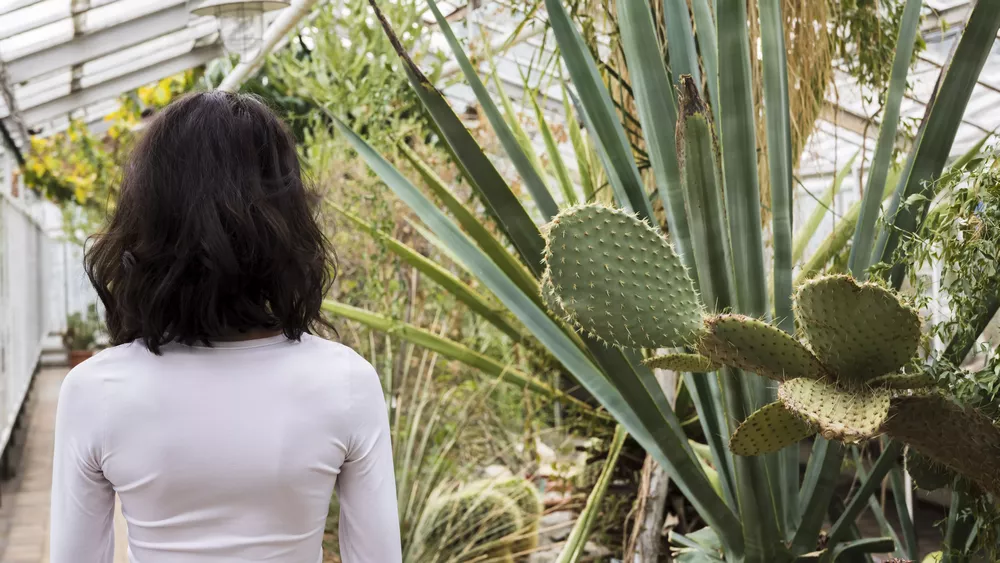
- Wear Protective Gear: Whenever you’re hiking in desert areas or gardening around cacti, make sure to wear long sleeves, long pants, and thick gloves.
- Stay on Designated Trails: If you’re exploring desert environments, stick to marked paths. Veering off-trail significantly increases your chances of brushing against hidden cacti.
- Handle Houseplants with Care: Even your indoor cacti can be a hazard. Use tongs or thick gloves when repotting or moving them. You also should keep cacti out of reach of children and pets to prevent accidental pokes.
- Know Your Cacti: Different cactus species have different types of defenses. For example, prickly pear cacti are infamous for their nearly invisible glochids. Familiarizing yourself with the specific cacti in your area or in your personal collection helps you be more cautious.
Wrapping Up
Removing tiny cactus needles doesn’t have to be a nightmare. By reacting quickly, using the correct tools, and applying proper techniques, you’ll be able to safely and effectively remove both spines and glochids.
With the tips and practical steps that we mentioned in this blog post, you’ll be well-prepared to handle any cactus needle injuries and continue to appreciate these fascinating plants without worrying about their prickly defenses.
FAQs
How long do symptoms last if spines are not removed?
Symptoms can persist for weeks or even months if spines remain in the skin. Granulomas or chronic inflammation may develop, requiring medical intervention.
Can I use wax or hair removal strips?
Some people report success with hair removal wax, but there is limited clinical evidence supporting its effectiveness compared to glue and gauze.
What if I can’t see the spines?
Use a magnifying glass and good lighting. If you still cannot see or remove the spines, seek medical help, especially if symptoms worsen.

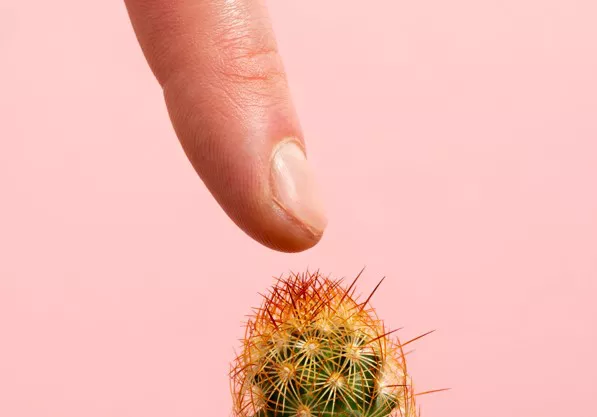
![Types of Rat Tail Cactus Differences and Similarities [With Pictures]](https://cactusology.com/wp-content/uploads/2025/04/Types-of-Rat-Tail-Cactus-Differences-and-Similarities-With-Pictures.jpg)
